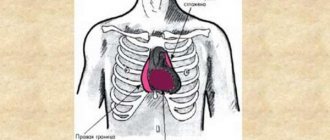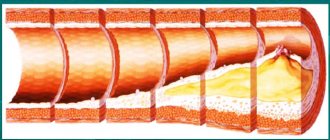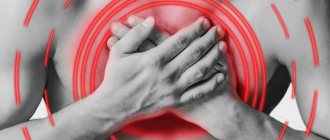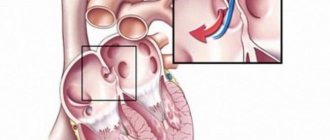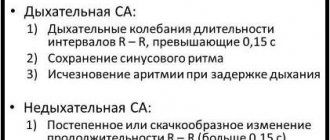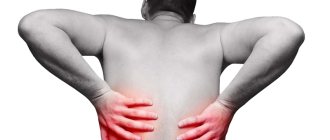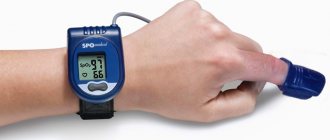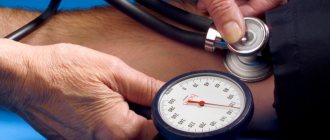Heart disease in children can only be determined by an experienced specialist. After all, a small child is not always able to complain about feeling unwell, so it is important to have regular scheduled examinations with a doctor. Cardiovascular diseases in children occur for various reasons, but if the disease is neglected and you do not consult a doctor in time, the child may lose his life. Therefore, not only systematic diagnosis, but also prevention play an important role. Heart disease in a child may not manifest itself at all; in the future, the pathology will manifest itself and lead to disastrous consequences.
Causes and consequences
Heart diseases in children develop under the influence of various factors. Both heredity and the child’s lifestyle have an impact.
The reasons for violations may be:
- congenital hereditary predisposition,
- cardiac connective tissue dysplasia,
- genetic defects;
- overload (emotional, physical),
It is necessary to carefully monitor the baby’s health, his schedule, nutrition, and lifestyle. Children's cardiovascular diseases can lead to dangerous consequences. An advanced disease threatens not only serious pathology, but disability and even death.
Make an appointment
"White" and "blue" vices
In addition to congenital and acquired classification of diseases, there are:
- Defects at the location of the defect (in the mitral, aortic, tricuspid valve or foramen ovale).
- Also based on anatomical changes in the heart muscle (stenosis, coarctation, atresia, hypoplasia, as well as defects in cardiac structures).
- According to the degree of pathology, based on hemodynamic data (grades 1, 2, 3 and 4).
With the first type of defects, there is a discharge of blood from left to right. There is no mixing of arterial and venous. In the second type, there is a reflux of venous blood into arterial blood, characterized by cyanosis.
These include:
- Fallot's disease.
- Transposition of the great vessels.
- Common arterial trunk.
- Atresia of the tricuspid valve.
Until recently, most of these pathologies took the lives of children, often even at the intrauterine stage of development. Now such children are helped, complex operations are performed, and they not only survive, some of them have a chance of a full recovery.
Symptoms and diagnosis
There are a number of symptoms that can help identify heart and vascular disease in children:
- rare pulse,
- cardiopalmus,
- pain in the heart and chest,
- shortness of breath,
- pallor and bluish skin color,
- delays in physical development,
- bad memory
- laziness,
- fainting,
- dizziness.
Diseases of the cardiovascular system in children are diagnosed by experienced and qualified cardiologists and pediatricians. Specialists conduct comprehensive ultrasound examinations, daily monitoring, tomography, and duplex scanning. If necessary, doctors resort to surgical treatment when vascular disease in children is life-threatening. For each patient, the optimal type of therapy is selected and medical supervision is carried out.
Heart disease in teenagers
Parents should pay special attention to the health of their child during adolescence. During this period, it grows rapidly, and the heart muscle also increases. Such changes can provoke the development of various cardiovascular diseases:
- Bicuspid valve prolapse. A pathology in which there is a malfunction of the valve located between the left atrium and the ventricle.
- Neurocirculatory dystonia is a multifactorial disease that can occur against the background of stressful situations. It is characterized by primary functional disorders of the cardiovascular system, which are based on an imperfection or disorder in the regulation of autonomic functions not related to neurosis or organic pathology of the nervous and endocrine systems.
- VSD is a complex of common problems that often arise at this age due to changes in the body. A teenager's body grows quickly, but the cardiovascular system cannot keep up with it. Therefore, such a diagnosis can be made to almost every second person aged 13-16 years. Internal organs do not receive enough oxygen, tachycardia and headaches are observed.
When to sound the alarm:
- the appearance of shortness of breath;
- cyanosis or excessive pallor of certain areas;
- swelling;
- dry cough;
- pain in the heart area;
- heart murmurs or tachycardia.
In any case, you cannot do without consulting a specialist. It is necessary to conduct a thorough examination and monitor the condition of the disease. Many of them are treated in the early stages and do not make themselves felt in adulthood.
The mass of a child's heart, relative to his body, is significantly greater than that of an adult. Accordingly, the heart rate is higher. It decreases with age, but during puberty there is a jump again.
As the body grows, internal organs also grow. Sometimes a picture is noted that the cavities of the cardiovascular system increase faster than the lumens of the valve openings of the main veins. In this regard, “youthful” heart syndrome is identified.
There are three forms:
- mitral;
- teenage drip heart syndrome;
- organ hypertrophy.
As the child grows, the number of blood vessels also increases.
Types of diseases
Children's heart diseases are divided into several types:
- rheumatism,
- heart failure,
- cardiomyopathy,
- arrhythmias,
- stenosis of the aorta and pulmonary artery,
- various inflammatory diseases
- endocarditis (disorders in the inner lining of the heart),
- myocarditis (malfunction of the heart muscle),
- pericarditis (inflammatory processes in the pericardial sac);
- congenital heart defects,
- hypertension,
- cardiac ischemia.
The main heart diseases of newborns:
- arterial hypertension,
- sinus tachycardia,
- bradyarrhythmia.
Diseases in children under one year old can be determined by the condition of the baby. Colic, anxiety, lethargy, pallor, cold sweat - all these are reasons to sound the alarm and immediately go to the clinic.
Make an appointment
Cardiovascular diseases in adolescents are often directly related to the rhythm of life that he leads. Among the most common are the following:
- cardiopsychoneurosis,
- mitral valve prolapse,
- VSD,
- chronic rheumatic disease.
Children's heart and vascular diseases are treatable. An experienced pediatric cardiologist will conduct a comprehensive study of the patient’s general condition and determine the optimal course of therapy. In the most severe cases, surgery is performed, after which the child undergoes rehabilitation under the supervision of a specialist.
All medications should only be prescribed by a doctor. Remember that self-medication is dangerous.
The structure of the human heart and its participation in blood circulation
If you remember from biology class, the heart is an organ consisting of four chambers: two atria and a similar number of ventricles. These sections are separated by partitions, and between the main sections there are openings with valves. Each side of the heart is responsible for a specific purpose of the circulatory system - this, of course, is the systemic and pulmonary circulation.
Let us remind you: the large circle starts in the left ventricle, goes through the aorta, then distributes blood through all the vessels to the organs and returns to the right atrium. Due to this, blood enters all tissues, enriches cells with oxygen, carries out gas exchange, selecting carbon dioxide from organs.
The small circle, accordingly, begins in the right ventricle. Blood flows through the pulmonary artery to the lungs and returns to the left atrium. The tasks of this circle are also obvious: from here the blood receives oxygen, which is then distributed to all organs.
The valves between the parts of the heart are responsible for preventing blood from gushing back, that is, for the normal functioning of blood circulation in general.
Prevention
Cardiovascular diseases in children are preventable. According to doctors, it is enough to follow a few well-known rules to minimize the occurrence of diseases in a child. A healthy and active lifestyle will help avoid problems in the body and reduce risks. After all, heart disease in children can be not only congenital, but also acquired, which means the health of your baby is in your hands. Recommended:
- frequent walks in the fresh air;
- physical therapy classes;
- a balanced diet including fish, nuts, flaxseed oil, avocado, pumpkin, garlic, broccoli, strawberries, pomegranate;
- listening to classical music;
- at least 8 hours of sleep every day.
If you suspect that your child has heart problems, do not put off going to the doctor for too long. Children should be treated by appropriate pediatric specialists. You can find the doctor you need on our website yourself or call the help desk (the service is free) - we will help. Cardiovascular diseases in children do not always manifest themselves, so do not forget about routine examinations.
Features of newborn heart development
The birth of a baby is a miracle that we can talk about endlessly. And one of the miracles that happens to the baby at this moment is the first breath, which radically changes the functioning of the life support systems in the baby’s body. If the baby did not breathe in the mother’s belly for all 9 months - oxygen came from the blood of the pregnant woman, then with the first breath the child starts the lungs, and the rest of the organs, including the heart, are completely rebuilt.
Before birth, there were openings in the main organ of the baby, which after birth lose their relevance: this is the oval window between the atria and two “shunts” between the vessels. Thanks to this structure, oxygen reached the brain and liver of the fetus to a greater extent. At the moment of the first breath, the pulmonary circulation starts. Then the oval window and the ducts between the vessels become useless, and therefore gradually close. As a rule, this happens within 2-3 days.
How to reduce cardiac risks in children
- Prevention of cardiac pathologies in children begins at the moment when a young man or girl enters into a relationship with the opposite sex, because the health of their future children largely depends on the lifestyle they lead.
- From the moment of birth, a child should periodically undergo a complete examination of the cardiac system in order to exclude cardiac risks.
- Proper nutrition, exercise, and avoidance of stressful situations are the key to the normal functioning of the child’s circulatory system.
Each person has his own predisposition to certain diseases. If you follow the advice of specialists, the risk of developing these diseases or worsening your condition is minimized. What do you need to know to properly prepare?
Factors in the development of congenital heart pathologies:
- Inherited from close relatives.
- Bad habits of the mother of the child during pregnancy and before conception.
- Infection during intrauterine development.
- The mother has diabetes and hypertension.
- Injuries received during childbirth.
Acquired cardiovascular diseases occur due to:
- Eating foods high in cholesterol.
- Presence of arterial hypertension.
- Excess weight.
- Sedentary and inactive lifestyle.
If parents are planning a pregnancy, they are obliged to pay due attention to their lifestyle. After all, the child might not have had many cardiovascular diseases if the parents had behaved correctly.
Congenital heart defects: something went wrong from the start
They are formed due to improper intrauterine development of blood vessels, heart valves, septa or walls extending from the heart.
The most common types are ventricular or atrial septal defect, patent foramen ovale, accessory chord, patent aortic duct, aortic or pulmonary stenosis. Defects can be single or combined. The changes disrupt the movement of blood inside the heart and/or through the vessels.
Severe defects are diagnosed by ultrasound in the womb or immediately after birth. However, it is often difficult to detect the disease in the first months or years of life. Often the defect is “inaudible”, and the child develops normally up to a certain point.

